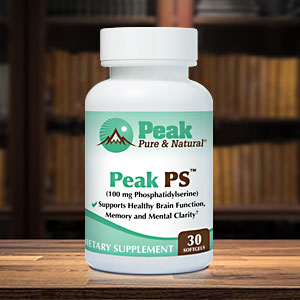Get Easy Health Digest™ in your inbox and don’t miss a thing when you subscribe today. Plus, get the free bonus report, Mother Nature’s Tips, Tricks and Remedies for Cholesterol, Blood Pressure & Blood Sugar as my way of saying welcome to the community!
‘Miracle’ molecule may speed diabetic foot ulcer healing

Diabetes is a complicated disease. But because it’s become so increasingly common — who doesn’t know someone with the disease? — it’s easy to forget just how insidious it is.
It’s also easy to brush it off as just a matter of being cautious of what you eat or adjusting medication. But poorly managed diabetes can tear your body down — from your heart to your limbs.
One of the most common complications for diabetics is a foot ulcer. These wounds can take anywhere from 90 to 150 days to heal and are at high risk of infection.
In fact, foot ulcers often lead to hospitalization due to complications — and for 14 to 24 percent of diabetics will lead to amputation and increase their death risk by 2.5 times.
With numbers like these, it’s no wonder researchers are exploring ways to speed the healing of diabetic foot ulcers. One biomedical engineering team at Michigan Technological University is seeking to reduce the healing time from three months to three weeks by amplifying the body’s natural healing processes…
The healing power of nitric oxide
The technology they’re using involves nitric oxide (NO), a chemical naturally produced by the body…
NO is a signaling molecule and in addition to promoting healthy circulation, it helps immune system cells communicate. Unfortunately, in patients with diabetes, nitric oxide production is impaired, lessening the healing power of skin cells.
“Nitric oxide is a powerful healing chemical, but it’s not meant to be heavy-handed,” says Megan Frost, a professor who runs a polymeric biomaterials lab at Michigan Tech. “We’re looking at the profiles of healthy and diabetic cells to find a more nuanced way to recover wound function.”
She and her team assessed NO under normal and diabetic conditions in skin cells called dermal fibroblast cells. Fibroblasts play a key role in the healing process, and past studies have shown their delayed response could be a major factor in slow healing time for diabetic foot ulcers.
When NO steps in, it helps get the healing process back into balance. But simply flooding the wound with nitric oxide isn’t the solution.
“The old approach is to add nitric oxide and sit back to see if it works,” Frost says. “What we’re finding is that it’s not enough to apply and leave; we have to keep tabs on how much nitric oxide is actually needed.”
To that end, Frost’s lab built its own nitric oxide-measuring device by hand. This device will be produced commercially to improve cell chemistry research.
The research team next plans to create bandages infused with NO that adjusts the release of the chemical based on the condition of the wound’s cells.
A little background in nitric oxide
In 1998, three pharmacologists won the Nobel Prize for identifying NO as a signaling molecule for the cardiovascular and nervous systems. Subsequent research has recognized it as an important player in the immune system as well.
NO was found in the endothelial cells that lined artery walls — where its chief function was as a powerful vasodilator. But because of its positive effect on circulation, it’s believed to also help white blood cells (infection-fighting cells) move efficiently within the body. According to the University of Reading, high amounts of nitric oxide produced by macrophages is toxic to bacteria.
NO is produced via the nitrate–nitrite–nitric oxide pathway. When we eat foods containing dietary nitrates, like spinach or beets (don’t confuse this with sodium nitrite and sodium nitrate food preservatives used in lunch meats and hot dogs), a chemical reaction occurs with good bacteria or microflora on the tongue. The result is that the nitrates are converted to nitrites and then nitric oxide.
Avoiding foot ulcers
Diabetes is associated with poor blood flow in the legs and feet. Additionally, many diabetics are prone to a type of nerve damage known as peripheral neuropathy which can decrease the perception of pain. That means a small scrape can go unnoticed until it has become an infected hard-to-treat wound.
Experts recommend diabetics check their feet daily for any blisters, cuts, scratches and ingrown toenails, all of which can cause an ulcer to form. And they advise smokers to stop smoking because it can slow the healing process.
Above all, proper management of blood sugar is imperative to avoid foot ulcers. Part and parcel of that is maintaining a healthy weight. Carrying extra weight increases stress on the feet which can lead to the breakdown of the skin.
In addition, diabetics need to maintain healthy vitamin D levels. In one study, researchers discovered that low vitamin D levels were significantly associated with a higher prevalence of foot ulcers in older patients with diabetes. Also, foot ulcers were more severe in patients with lower vitamin D levels.
Of course, following a healthy nutrient-rich diet is of utmost importance to successfully managing diabetes and avoiding complications. Most experts recommend variations of low-carb diets. Be sure yours include the nutrients most beneficial to your unique health needs.
Editor’s note: Did you know that when you take your body from acid to alkaline you can boost your energy, lose weight, soothe digestion, avoid illness and achieve wellness? Click here to discover The Alkaline Secret to Ultimate Vitality and revive your life today!
Sources:
Nitric Oxide Technology Helps Quickly Heal Diabetic Foot Ulcers — Michigan Technological University
Investigative Study on Nitric Oxide Production in Human Dermal Fibroblast Cells under Normal and High Glucose Conditions — Medical Sciences
Frequently Asked Questions: Diabetic Foot Ulcers — University of Michigan Health
Preventing Diabetic Foot Ulcers — NYU Langone Health














